The end that feels like a beginning (Vineet Kajrolkar, India, ITP 2025)
Written by Vineet Kajrolkar, Exhibition Manager, Museum of Art and Photography Bengaluru (India, ITP 2025)
Today was the day we had been hoping would never come. It marked the end of our time here, but also a moment we were looking forward to, as we would finally present our Object in Focus projects to our colleagues at the BM and partner museums we had engaged with throughout this journey.
The day began with a smaller group of us meeting Zoe Favrin and Scarlet Watts from the fundraising department, who gave us a brief insight into the museum’s fundraising strategy. Through this session, we reflected on how important it is for museums to look at external funding sources. Museums today are multi-faceted and they are not only about collections but also about education, community work, digital engagement, and ambitious exhibitions. The traditional grant models that once supported this work are no longer sufficient for the scale and range of projects we now take on. I left the room thinking about how museums need larger and more prominent development departments – not as supporting units, but as core departments central to a museum’s sustainability.
We then took a short lunch break, enjoying our final few subsidised meals. In that moment, I became aware that beyond the ITP team, I was also engaging daily with the canteen staff, who always greeted me with a warm “Hi ya” as they quickly billed my food. They were consistently kind and smiling, even on days when it was clear that work had been hard on them. It reminded me that there is much to learn from the people who hold up museums in quiet, everyday ways. They are really the ones who keep the place going.
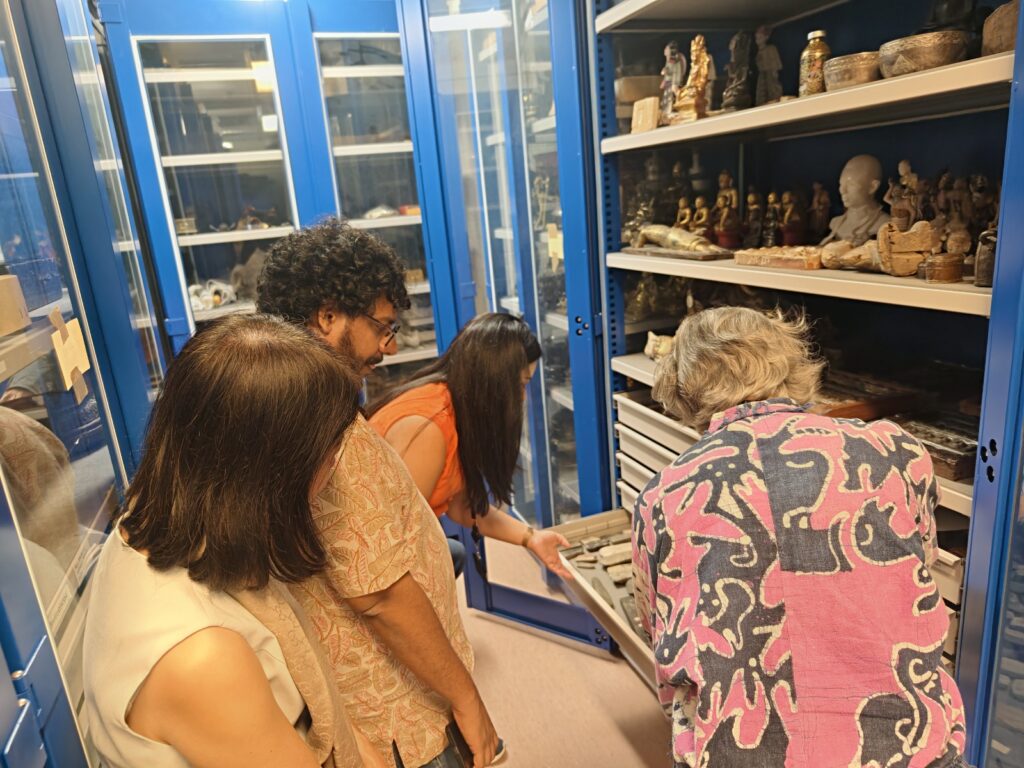
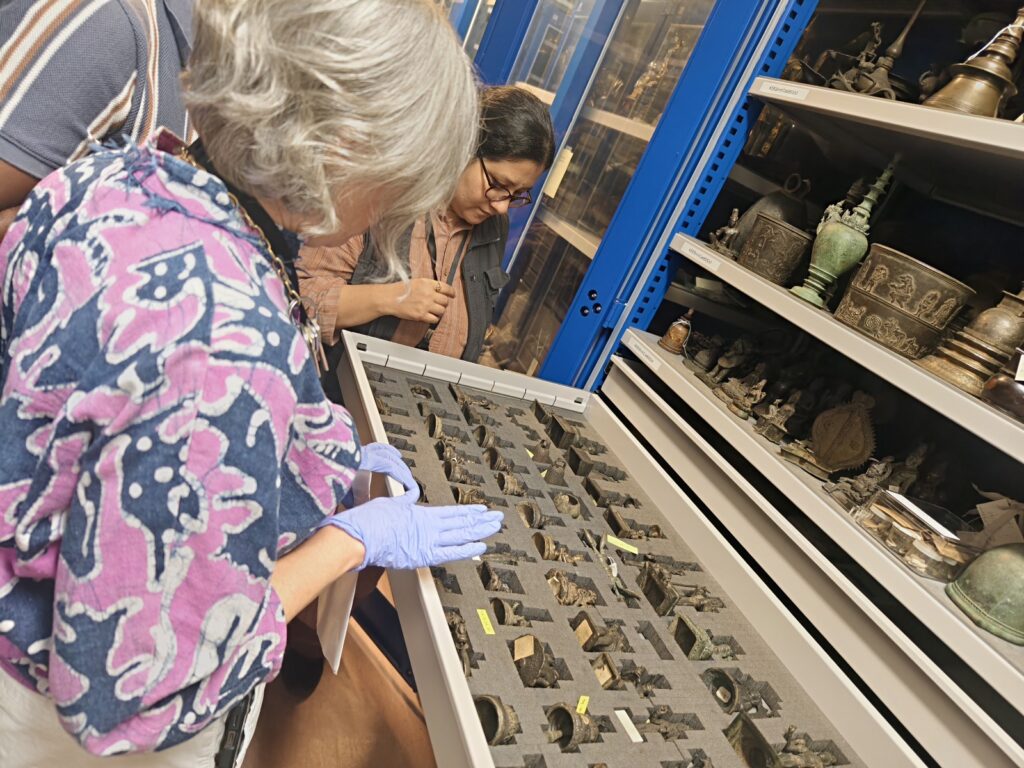
Our next stop was an additional department session in the Asia storages with Alexandra Green. Looking through museum storage is always exciting, especially when you are with a group of equally enthusiastic people. We began with Mughal paintings, trying (and mostly failing) to identify kings, but in the process appreciating the brushwork and intricate album borders. From there, we moved on to collections from China, Sri Lanka, Thailand, and Malaysia. Everyone had stories to share about these artefacts, but what we museum nerds got most excited about were the automatic moving storage racks and the sight of empty shelves full of possibilities for future collections.
It’s funny – as a museum worker, whenever I am in a museum space, I find myself paying more attention to the displays, storage systems, and environmental details than to the artworks and objects themselves. Within a few hours I am fatigued, yet I still want to see everything, to document everything. In the storages, Alexandra kept reminding us that professional photographs of the objects were already available on the website, but still, all we wanted was to capture one on our phones – as a personal mark of having seen the work in front of us. It felt almost like the old Chinese and Japanese collectors’ stamps found on scrolls: a trace of presence, a record of encounter. Well… Art mirrors us, and we mirror art.
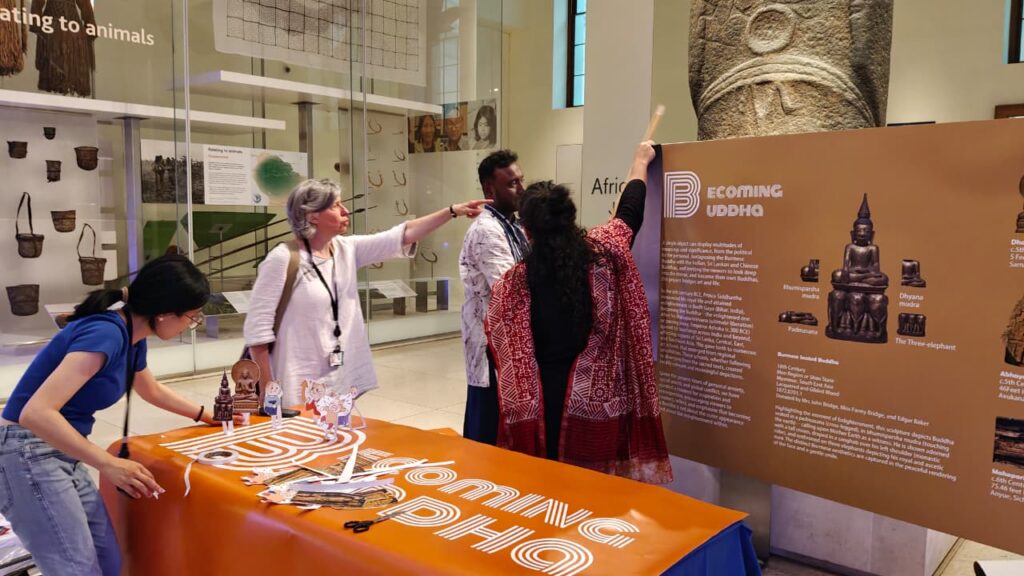
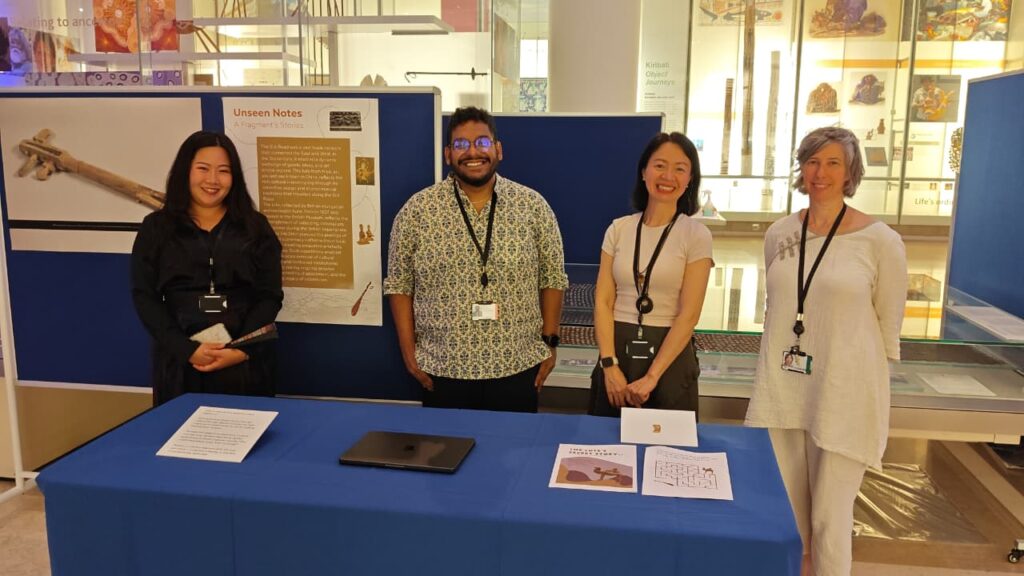
After a quick break, it was time for our Object in Focus supporters’ reception in the Wellcome Gallery. Weeks of thinking, designing, and even rare heated arguments had brought us to this point. How do we reinterpret works? What stories do we tell? And which is the “right” story to tell, and in what way? These were the questions we had explored through our presentations. Drenched in sweat on a hot and humid London day, we set up our displays against the backdrop of the Living and Dying exhibition (ironically fitting). Some groups kept their presentations simple and got rid of their tables, while others went all out with grand designs. Each display was unique, each telling its own story. Costumes from block prints and togas to sarongs and distinctive pins added to the evening’s charm.

As our colleagues from the BM and partner museums, along with supporters and friends, began to arrive, we spoke our hearts out – some of us almost losing our voices in the process. We worked together, presented ideas, exchanged thoughts, and made new connections. In just these few hours, the entire spirit of the ITP seemed encapsulated. It was also an opportunity to meet our generous supporters; for me, that was Mr Richard Harris from the Simon Digby Memorial Charity.
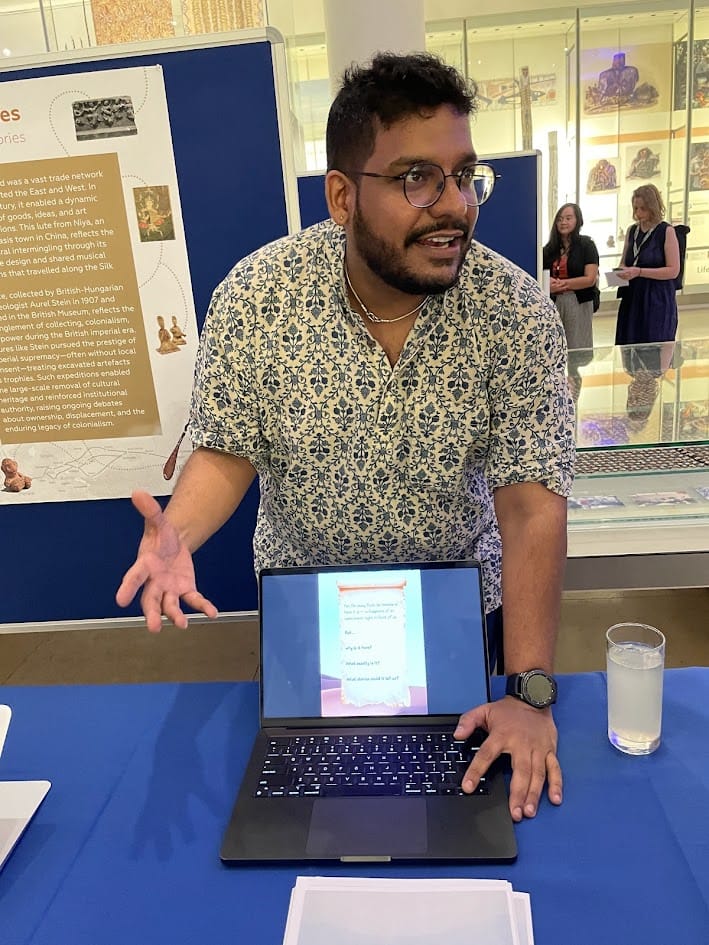
As the crowds dispersed and we celebrated, reality struck: it was nearly over. One more day, and we would all be returning to our own countries, institutions, and people. Over drinks, we said our bittersweet goodbyes. We may be leaving, but we are taking back far more than we came with – new friends, new knowledge, new opportunities, and countless new ideas. Goodbyes are hard. I feel as though I adopted new siblings here. These were some people who understood me completely, and some who did not, but made the effort to. Just as every work in a museum’s collection adds its own value, each person added something meaningful to my life through the experience of being here together.
I leave with the thought that though farewells are tough, goodbyes are never forever.
